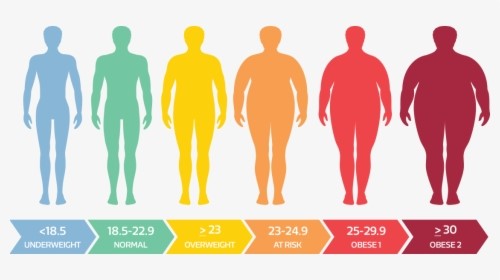Routine Physical Exam
A routine physical exam provides you the opportunity to access preventive services and discuss strategies to minimize health risks and achieve a healthy lifestyle. Based on age and risk, annual assessments should include:
- services like vaccinations, that improve your health by preventing diseases and other health problems.
- Screenings, which are medical tests to check for diseases early when they may be easier to treat.
- Education and counseling to help you make informed health decisions based off your health habits and health history.
Most insurance plans cover a variety of preventive services for men without charging a co-payment or co-insurance, even if you have not met your yearly deductible. Contact your health insurance or visit HealthCare.gov to learn more about the preventive care benefits available with Marketplace health plans.
|
Screening tests for Men |
|
|
Abdominal aortic aneurysm |
Guidelines recommend a one-time screening for abdominal aortic aneurysm by ultrasonography in men ages 65 to 75 years who have ever smoked. |
|
Blood pressure testing |
Testing at least every two years if you have normal blood pressure (120/80 or below); at least once per year if it is elevated or if you are at increased risk for heart disease and stroke (such as from smoking or diabetes). |
|
Cholesterol test |
Get this checked every five years; if you have risk factors for heart disease, discuss with your doctor whether you should be tested more frequently. |
|
Colorectal screening |
Men ages 50 to 75 should be tested by one of these three methods: (1) fecal occult blood test annually; (2) flexible sigmoidoscopy every five years; (3) colonoscopy every 10 years. After age 75, discuss the need for continued screening with your doctor. |
|
Diabetes screening |
If you are age 40 to 70, and overweight or obese, you should be tested. If you have risk factors for type 2 diabetes or heart disease, or if your blood pressure is higher than 135/80, or if you use medication to control your blood pressure, talk to your doctor about whether you should be tested, and how often. |
|
Hepatitis B virus testing |
Men at increased risk for this infection should be tested regularly (discuss how often with your doctor). Risk is increased if you have had unprotected sex with multiple partners, have shared needles during intravenous drug use, have sex with other men, are exposed regularly to human blood (such as medical workers), live with someone who has chronic hepatitis B virus infection, or travel to regions with high rates of hepatitis B virus infection. |
|
Hepatitis C virus testing |
Men at increased risk for this infection should be tested regularly (discuss how often with your doctor). Risk is increased if you have had blood (or blood product) transfusions or received a transplanted organ before June 1992, are a health care worker who may have been stuck by a needle, or have ever used injected drugs, even just once many years ago. |
|
Lung cancer |
Annual screening for lung cancer with a low-dose CT scan in adults ages 55 to 80 years who have a 30 pack-year smoking history (smoked one pack/day for 30 years, two packs/day for 15 years, etc.) and who currently smoke or have quit within the past 15 years. |
|
Prostate-specific antigen (PSA) test |
When and whether men should have regular PSA tests for prostate cancer is controversial. These tests are not recommended by the U.S. Preventive Services Task Force. Discuss with your doctor. |
|
Sexually transmitted infection |
Men who have had unprotected sex with a partner whose health history they do not know should be tested for syphilis (or other sexually transmitted diseases, if your doctor thinks you may be at risk). |
|
Weight and height screening |
The combination of weight and height determine your body mass index (BMI), the most widely used measure of overweight. Measure weight annually, and height once every 10 years past age 50. |
Testicular Self-Exam
Testicular cancer is highly treatable especially if caught early. Most of the time a lump or swelling on the testicle is the first symptom. Most testicular cancers are found by men themselves or their partner, very few are found by a physician. It’s recommended that all men examine their testicles monthly.
Why do Self-Exams?
Testicular self-exams are important to notice changes in one’s testicles. By doing the monthly testicular self-exams, you should become familiar with your testicles thus making it easier to notice any changes.
Most testicular cancers are found by men themselves or their partner, very few are found by a physician. Therefore, it is so important to be familiar with what is normal and if you do notice any changes then see a doctor immediately.
How to:
- It is best to do the testicular self-exam during or right after a warm shower or bath. The warmth relaxes the scrotum making the exam easier.
- Don't be alarmed if one testicle seems slightly larger than the other, or if one testicle hangs lower than the other - that's normal.
- You should also be aware that each normal testicle has a small, coiled tube called the epididymis that can feel like a small bump on the upper or middle outer side of the testis.
- Normal testicles also contain blood vessels, supporting tissues, and tubes that carry sperm. Some men may confuse these with abnormal lumps at first. If you have any concerns, ask your doctor.

- Stand in front of a mirror if possible. Check for any swelling on the scrotal skin.
- Examine each testicle with both hands. Hold your testicle between your thumbs and middle fingers and roll it gently but firmly between your fingers.
- Look and feel for any hard lumps or nodules (smooth rounded masses) or any change in the size, shape, or consistency of your testicles.
You should not feel any pain when performing the self-exam. Be aware of any dull soreness or heaviness. The testicles should be smooth and firm to the touch.
A testicle can get larger for many reasons other than cancer. For example, fluid can collect around the testicle to form a hydrocele or the veins in the testicle can dilate and cause enlargement and lumpiness around the testicle. If your testicle seems larger, have a doctor examine you to be sure you have one of these conditions and not a tumor.
Need further guidance? Download the app named “Testicular Cancer Self Exam” (Apple Store or Google Play) created by the Testicular Cancer Society. Or you can text @selfexam to 81010 for text reminders.
Sexually Transmitted Diseases
Sexually Transmitted Diseases (STDs), also called Sexually Transmitted Infections, are passed from one person to another person through sexual contact. You can have an STD without showing any signs or symptoms. Many STDs can be easily treated, so ask your doctor about what testing is right for you. Talk with your partner about getting tested as well.
Prevention
The best way to prevent an STD is to not have vaginal, oral, or anal sex.
If you do have sex, you can lower your risk of getting an STD by following easy precautions. The precautions work best when used together. No single precaution can protect you from every single type of STD. For more information or to learn about our STD clinic visit our Confidential HIV/STD Counseling & Testing page.
Recommended Screening Schedule:
- Ages 13-64: At least one HIV test
- Sexually active gay and bisexual men: Annual screening for syphilis, chlamydia, and gonorrhea. Those who have multiple partners or anonymous partners should be tested more frequently.
- Men who have unsafe sex* or share injection drug equipment: HIV, gonorrhea, and chlamydia screening every year.
*Unsafe sex is defined as those who do not use a condom correctly every single time they have sex, have unprotected sex, multiple or anonymous sex partners, or a sex partner who has an STD.
Healthy Weight
BMI is a ratio of a person’s height and weight, and does not directly measure a person’s health status, muscle, bone, body fat, or body water. A high BMI in combination with poor eating habits and lack of exercise can mean that a person is at risk for health-related problems such as high blood pressure and diabetes. A low BMI in combination with decreased food intake or skipping meals and snacks can mean that a person is at risk for health-related problems such as a compromised immune system and malnutrition.
How is BMI measured?
BMI is a mathematical calculation of your weight (in pounds) times 703 divided by your height (in inches) squared. You can figure out your BMI on your own using this formula: BMI = Weight (in pounds) x 703 divided by Height (in inches) squared.


What does my BMI mean?
If you’re under the age of 20, once your health care provider calculates your BMI, they use a growth chart to convert this number into a percentile that is based on your age and sex. Your percentile at one age compared to your percentile at younger ages tells you how you have been growing since birth. Your health care provider can tell you if your BMI percentile falls into the underweight, normal weight, overweight or obese category which may not be an appropriate indicator of health status.
No matter what your BMI percentile is, it’s important to ask if it has changed over the last couple of years. Although BMI can change when you’re growing or going through puberty, teens should ideally stay at about the same BMI percentile during their teen years. If your BMI percentile changes a lot either up or down, you should talk to your health care provider about possible reasons for the change. For people 20 years and older, healthy ranges do not differ by age or sex and are no longer given in percentiles.
What is a BMI report card and what is it used for?
Some schools in the United States are checking weights and heights of students at school, calculating BMI, and sending this information home to parents as a BMI report card. If you or your parents receive a BMI report card, it is important that you talk with a health care provider or registered dietitian who can explain what the numbers mean.
What if my BMI is high?
Talk to your health care provider about whether you should be concerned about your BMI. Keep in mind that BMI is just an estimate of body size and is not a good indicator of overall health. This is true for muscular individuals (especially those who exercise or are very athletic). Their weight may be higher because of extra “muscle mass” and not because of extra body fat, and BMI doesn’t consider how much muscle someone has.
What if my BMI is too low?
Talk to your health care provider about whether you should be concerned about a low BMI percentile. They will likely look at your growth chart to see if you have been following roughly the same percentile as you have grown, or whether the percentile has dropped. Having a BMI classification of underweight can put you at risk for health complications such as a weakened immune system. It might also mean that you are missing out on key nutrients in your dietary intake.
If your BMI is falls in the underweight, overweight, or obese category, you should see your health care provider. He/she can check to see if your lifestyle habits put you at risk for getting any serious health problems and can refer you to a registered dietitian to make sure you are getting all the nutrients you need.
Cholesterol
Cholesterol is a type of fat made by your liver and carried in your blood. High cholesterol levels can lead to an increased risk of heart disease. If you are age 20 or older, you should be screened every 4-6 years or as directed by your doctor.
Total Blood Cholesterol Range:
- Less than 200 mg/dL: Desirable
- 200-239 mg/dL: Borderline High
- 240+ mg/dL: High
Understanding your cholesterol levels
Maintaining healthy cholesterol levels is a great way to keep your heart healthy. It can lower your chances of getting heart disease or having a stroke.
The American Heart Association recommends
All adults age 20 or older should have their cholesterol (and other risk factors) checked every four to six years. Work with your doctor to determine your risk for cardiovascular disease and stroke.
Your test results: A preview
Your test results will show your cholesterol levels in milligrams per deciliter of blood (mg/dL). Your total cholesterol and HDL (good) cholesterol are among numerous factors your doctor can use to predict your lifetime or 10-year risk for a heart attack or stroke. Your doctor will also take other risk factors into account, such as age, family history, smoking and high blood pressure.
Lipid profile or lipid panel is a blood test that will give you results for your HDL (good) cholesterol, LDL (bad) cholesterol, triglycerides, and your total blood (or serum) cholesterol.
For many years, doctors used ranges to evaluate HDL (good) cholesterol levels. Today, doctors think about risk in broader terms. They evaluate HDL cholesterol levels in context, along with other risk factors.
HDL (good) cholesterol
People with high blood triglycerides usually also have lower levels of the good kind of cholesterol, or HDL. Genetic factors, type 2 diabetes, smoking, being overweight and being sedentary can all lower HDL cholesterol. Women tend to have higher levels of HDL cholesterol than men do.
LDL (bad) cholesterol
Since LDL is the bad kind of cholesterol, a low LDL level is considered good for your heart health.
In the past, doctors relied on specific ranges for LDL. Today, doctors consider LDL levels as one factor among many when evaluating cardiovascular risk. (The latest American Heart Association guidelines endorse this more integrated approach.) Talk to your doctor about your LDL cholesterol level as well as other factors that impact your cardiovascular health.
A diet high in saturated and trans-fat is unhealthy because it tends to raise LDL cholesterol levels.
Triglycerides
Triglycerides are the chemical form in which most fats exist – in foods, as well as in our bodies.
Normal triglyceride levels vary by age and sex. People with high triglycerides often have a high total cholesterol level, including a high LDL (bad) cholesterol level and a low HDL (good) cholesterol level. Many people with heart disease or diabetes also have high triglyceride levels.
Several factors can contribute to an elevated triglyceride level, including:
- Being overweight, or obesity
- Physical inactivity
- Cigarette smoking
- Excess alcohol consumption
- A diet very high in carbohydrates (more than 60 percent of total calories)
- These factors can be addressed with lifestyle changes. Underlying diseases or genetic disorders can also cause high triglyceride levels.
Total blood (or serum) cholesterol score
This component of your test results is actually a composite of different measurements. Your total blood cholesterol score is calculated by adding your HDL and LDL cholesterol levels, plus 20 percent of your triglyceride level.
Here again, “normal ranges” are less important than your overall cardiovascular risk. Like HDL and LDL cholesterol levels, your total blood cholesterol score should be considered in context with your other known risk factors.
Your doctor can recommend treatment approaches accordingly.
For more information on how cholesterol impacts your health, visit the American Heart Association.
Blood Glucose
Blood glucose (blood sugar) is used to monitor for diabetes and pre-diabetes. It is important for blood glucose levels to stay in a healthy range. If they go too low, you can lose the ability to think and function normally. If they go too high, it can cause damage and complications to the body over the course of many years.
Three tests can be completed to test for diabetes: A1c test which measures your average blood glucose level over the past 2 or 3 months; Fasting blood glucose test which measures your blood sugar after an overnight fast (not eating); or a glucose tolerance test which measures your blood glucose before and after you drink a liquid that contains glucose. The chart below describes the current ranges for each of these tests.
Talk with your healthcare provider to understand your risk for type 1, type 2, or gestational diabetes and a recommended screening schedule.
To learn more, visit the CDC’s Diabetes page
 .
.


Accommodations available upon request. Please contact 815-802-9400 Option 3 for more information.